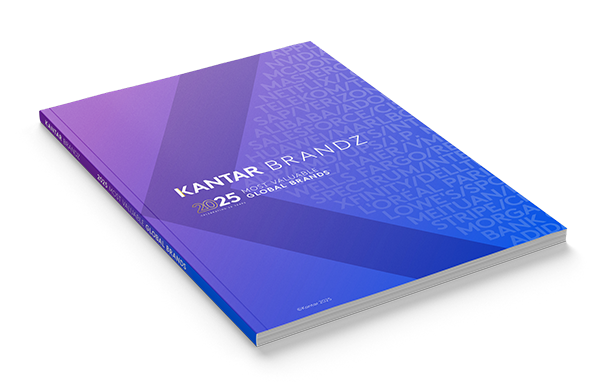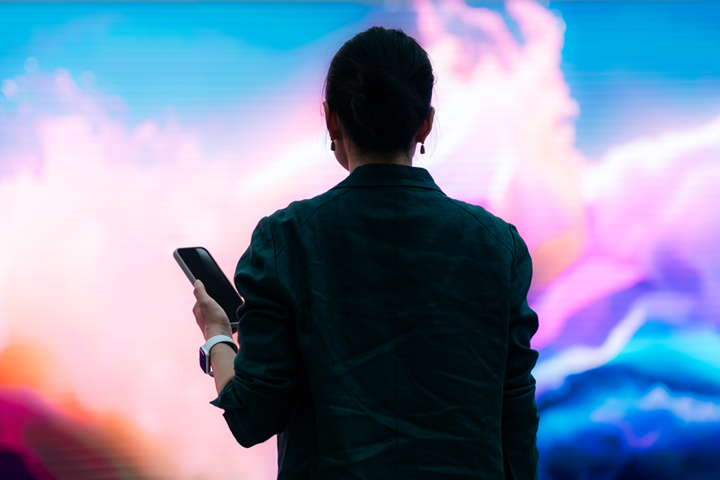Over the past two decades, the marketplace has shifted from an environment of widespread economic optimism and confidence to one riven by volatility, disruption, and uncertainty. Yet, Kantar BrandZ finds that strong brands continue to thrive by finding growth and value in new spaces, new consumers, new processes and new technologies. Instability has proven to be no barrier to brand success. Instead, volatility means opportunity.
A year later, Ben Bernanke, who would later serve as Chair of the Federal Reserve and win the Nobel prize himself, popularized the concept of the Great Moderation as the best way of characterizing the dramatic reduction in global macroeconomic volatility that occurred during the period from the mid-1980s to the opening years of the new millennium.
The consensus view of this time was a future of continuing moderation and stability, thereby providing a solid platform for stronger growth and greater globalization. Developing markets were booming, particularly China and India, which were posting record growth. Consumers in developed markets were riding a wave of internet innovations, low interest rates, and a bull market in housing.
Volatility is characterized by sudden, frequent disruptions and the accompanying swings – wide and often wild – between highs and lows. Turbulence, transformation, and uncertainty are hallmarks of volatility; so too is opportunity.
The financial crisis crashed confidence and trust and sent financially strapped consumers to budget brands. But this difficult period of disruption, filled as it was with worries that the world was coming apart at the seams, also saw many auspicious developments.
Volatility is not just adverse events. Systemic shocks often come from ingenuity, originality and invention. Smartphones, social media and cloud computing took off during this period. Big steps forward were made in cryptocurrencies, industrial 3D printing, consumer drones, EVs, autonomous vehicles, space travel, genetic engineering, fintech, streaming media, VR, AI and the Internet of Things.
The biggest of these were touchscreen smartphones, which completely upended global flows of information, payments and shopping. Online retail soared with the mainstreaming of smartphones, spurring a parallel rise in omni-commerce. On-demand transportation services used smartphones to pioneer an innovative business model that quickly expanded to vacation rentals, workspaces, healthcare, home services, entertainment, grocery shopping and food delivery.
Lingering discontent from the financial crisis was also empowered by these enhanced digital capabilities. Political populism and social activism took off with citizen journalism, microblogging and cancel culture. At the same time, concerns over IP and data flows grew. As did worries over the flow of migrants.
People concerned about these sorts of social, political and economic issues put digital to use to find like-minded allies and bring critical mass to movements as diverse as Occupy Wall Street, the Tea Party, Brexit, Arab Spring, Yellow Vests (Gilets Jaunes), Black Lives Matter, #MeToo, MAGA and a series of global climate strikes.
Despite the hardships, consumers, businesses and brands proved resilient and agile. It took substantial intervention to stabilize markets, but the economic order held firm. The unemployment spike was brief. Stock market reversals were even briefer. Companies digitized at a record pace. Demand for cloud services took off. Remote work mainstreamed. Spending shifted in ways that reflected home as the new hub of life. Ecommerce shifted into a higher gear.
Though vaccines rolled out with unprecedented speed, institutional trust took another hit. Science and public health got swallowed up in the rising tide of political polarization.
These simmering tensions boiled over in the first months of the second Trump administration. He leaned into the disruption he felt was his electoral mandate, with a series of dramatic actions involving foreign aid, climate, public health, federal employees, immigration, diversity and global trade. His April tariffs, though quickly paused, sent stocks, bonds and the dollar tumbling. Uncertainty spiked. And clarity about the future clouded over as the old global order struggled to contain this pushback against its authority and hegemony.
Amidst these alarming developments, breakout innovations in VR and AI have thrown open the doors for radical advances in business, entertainment, shopping and identity. Altogether, the past two years have been the 21st century in miniature: Digital. Smartphones. AI. Mistrust. War. Climate. Protest. Inflation. Health. Demographics. This is the face of volatility in the 21st century.
Yet, as in every era over the past 20 years, big opportunities are available for smart, strong brands. Volatility is a tough climate in which to do business. It is harder to plan because it is harder to anticipate and extrapolate. It is harder to operate because many business processes are legacy systems developed during more stable times.
Volatility is also tough for consumers. People find it harder to plan, too. Less can be taken for granted and people become more uncertain about what and who to rely on. The natural reaction to old certainties run aground is to demand more, to exercise more skepticism, to insist on more assurances and security and to be more cautious about commitments.
At the same time, volatility is jam-packed with opportunity. Volatile times heighten the need for new and better solutions, the urgency of which is intensified by the pace of change and the degree of uncertainty. Volatility breaks rules and defies norms, making room for fresh approaches. Volatility can be a friend to originality.
Innovation piggybacks on boom times, but also fixes things during busts. Even in volatile markets, there is upside room to grow. Changing demographics, for example, mean new household structures and emerging consumer groups. Breakthrough technologies unlock improvements, advances, novelty and second-and third-order inventions.
Volatility is not easy to navigate, but the rewards can be ample, often immense. The proof is in the pudding. Two decades of Kantar BrandZ tracking finds that brand value has grown steadily and multiplicatively alongside the broader ramp-up of volatility in the marketplace.
The current moment is packed with potential. The confluence of ongoing pivots in demographics, technologies, politics, energy and healthcare is transitioning the marketplace to a new era. Volatility is accelerating the pace of change by removing impediments to growth. The horizon of opportunity for brands is wide open.
The 20th anniversary edition of Kantar BrandZ’s Most Valuable Global Brands rankings and report are now available at www.kantar.com/campaigns/brandz/global
For a quick read on a brand’s performance compared to competitors in a specific category, Kantar’s free interactive tool, BrandSnapshot powered by BrandZ, provides intelligence on 14,000 brands. Find out more here.
2006-2007 - Boom Times
The early 2000s were a time of swaggering confidence and optimism among businesspeople and macroeconomists alike. In his 2003 presidential address to the American Economic Association, Nobel prizewinning economist Robert Lucas, Jr., summed up this shared sentiment in a sentence, ‘The central problem of depression prevention has been solved.’A year later, Ben Bernanke, who would later serve as Chair of the Federal Reserve and win the Nobel prize himself, popularized the concept of the Great Moderation as the best way of characterizing the dramatic reduction in global macroeconomic volatility that occurred during the period from the mid-1980s to the opening years of the new millennium.
The consensus view of this time was a future of continuing moderation and stability, thereby providing a solid platform for stronger growth and greater globalization. Developing markets were booming, particularly China and India, which were posting record growth. Consumers in developed markets were riding a wave of internet innovations, low interest rates, and a bull market in housing.
2008-2012 - The Great Recession
The financial crisis of 2008 pushed the global economy to a whisker’s edge of collapse. While the 21st century opened with plenty of turmoil and shocks – Y2K, the dot-com bust, global terrorism, SARS, two wars – it was the financial crisis that made it emphatically clear that volatility was back as the overarching context of work, life and business. The Great Moderation had run its course.Volatility is characterized by sudden, frequent disruptions and the accompanying swings – wide and often wild – between highs and lows. Turbulence, transformation, and uncertainty are hallmarks of volatility; so too is opportunity.
The financial crisis crashed confidence and trust and sent financially strapped consumers to budget brands. But this difficult period of disruption, filled as it was with worries that the world was coming apart at the seams, also saw many auspicious developments.
Volatility is not just adverse events. Systemic shocks often come from ingenuity, originality and invention. Smartphones, social media and cloud computing took off during this period. Big steps forward were made in cryptocurrencies, industrial 3D printing, consumer drones, EVs, autonomous vehicles, space travel, genetic engineering, fintech, streaming media, VR, AI and the Internet of Things.
2013-2019 - Self-empowerment
Recovery from the Great Recession was weighed down by unemployment and austerity. Institutional trust suffered amid concerns about inequality and climate change. Even so, these fires were burning themselves out and as they were, new shoots were appearing that promised fresh opportunities, many of which were bigger than ever.The biggest of these were touchscreen smartphones, which completely upended global flows of information, payments and shopping. Online retail soared with the mainstreaming of smartphones, spurring a parallel rise in omni-commerce. On-demand transportation services used smartphones to pioneer an innovative business model that quickly expanded to vacation rentals, workspaces, healthcare, home services, entertainment, grocery shopping and food delivery.
Lingering discontent from the financial crisis was also empowered by these enhanced digital capabilities. Political populism and social activism took off with citizen journalism, microblogging and cancel culture. At the same time, concerns over IP and data flows grew. As did worries over the flow of migrants.
People concerned about these sorts of social, political and economic issues put digital to use to find like-minded allies and bring critical mass to movements as diverse as Occupy Wall Street, the Tea Party, Brexit, Arab Spring, Yellow Vests (Gilets Jaunes), Black Lives Matter, #MeToo, MAGA and a series of global climate strikes.
2020-2022 - The Pandemic
COVID-19 knocked the world sideways. It overwhelmed public health systems and locked down travel, business and public gatherings. A brief lockdown was hoped for, but it turned into years and stressful social distancing and quarantines.Despite the hardships, consumers, businesses and brands proved resilient and agile. It took substantial intervention to stabilize markets, but the economic order held firm. The unemployment spike was brief. Stock market reversals were even briefer. Companies digitized at a record pace. Demand for cloud services took off. Remote work mainstreamed. Spending shifted in ways that reflected home as the new hub of life. Ecommerce shifted into a higher gear.
Though vaccines rolled out with unprecedented speed, institutional trust took another hit. Science and public health got swallowed up in the rising tide of political polarization.
2023-today - Insecurity
As the pandemic waned, insecurities multiplied. Inflation soared. Supply chains snarled. Drought hamstrung the Panama Canal, while terrorist threats squeezed the Suez Canal. The war in Ukraine choked off energy supplies. US-China tensions heightened trade worries. The October 7 attack on Israel led to more war and boycotts. Extreme weather brought more misery. Populist politics gathered additional support.These simmering tensions boiled over in the first months of the second Trump administration. He leaned into the disruption he felt was his electoral mandate, with a series of dramatic actions involving foreign aid, climate, public health, federal employees, immigration, diversity and global trade. His April tariffs, though quickly paused, sent stocks, bonds and the dollar tumbling. Uncertainty spiked. And clarity about the future clouded over as the old global order struggled to contain this pushback against its authority and hegemony.
Amidst these alarming developments, breakout innovations in VR and AI have thrown open the doors for radical advances in business, entertainment, shopping and identity. Altogether, the past two years have been the 21st century in miniature: Digital. Smartphones. AI. Mistrust. War. Climate. Protest. Inflation. Health. Demographics. This is the face of volatility in the 21st century.
Yet, as in every era over the past 20 years, big opportunities are available for smart, strong brands. Volatility is a tough climate in which to do business. It is harder to plan because it is harder to anticipate and extrapolate. It is harder to operate because many business processes are legacy systems developed during more stable times.
Volatility is also tough for consumers. People find it harder to plan, too. Less can be taken for granted and people become more uncertain about what and who to rely on. The natural reaction to old certainties run aground is to demand more, to exercise more skepticism, to insist on more assurances and security and to be more cautious about commitments.
At the same time, volatility is jam-packed with opportunity. Volatile times heighten the need for new and better solutions, the urgency of which is intensified by the pace of change and the degree of uncertainty. Volatility breaks rules and defies norms, making room for fresh approaches. Volatility can be a friend to originality.
Innovation piggybacks on boom times, but also fixes things during busts. Even in volatile markets, there is upside room to grow. Changing demographics, for example, mean new household structures and emerging consumer groups. Breakthrough technologies unlock improvements, advances, novelty and second-and third-order inventions.
Volatility is not easy to navigate, but the rewards can be ample, often immense. The proof is in the pudding. Two decades of Kantar BrandZ tracking finds that brand value has grown steadily and multiplicatively alongside the broader ramp-up of volatility in the marketplace.
The current moment is packed with potential. The confluence of ongoing pivots in demographics, technologies, politics, energy and healthcare is transitioning the marketplace to a new era. Volatility is accelerating the pace of change by removing impediments to growth. The horizon of opportunity for brands is wide open.
The 20th anniversary edition of Kantar BrandZ’s Most Valuable Global Brands rankings and report are now available at www.kantar.com/campaigns/brandz/global
For a quick read on a brand’s performance compared to competitors in a specific category, Kantar’s free interactive tool, BrandSnapshot powered by BrandZ, provides intelligence on 14,000 brands. Find out more here.






